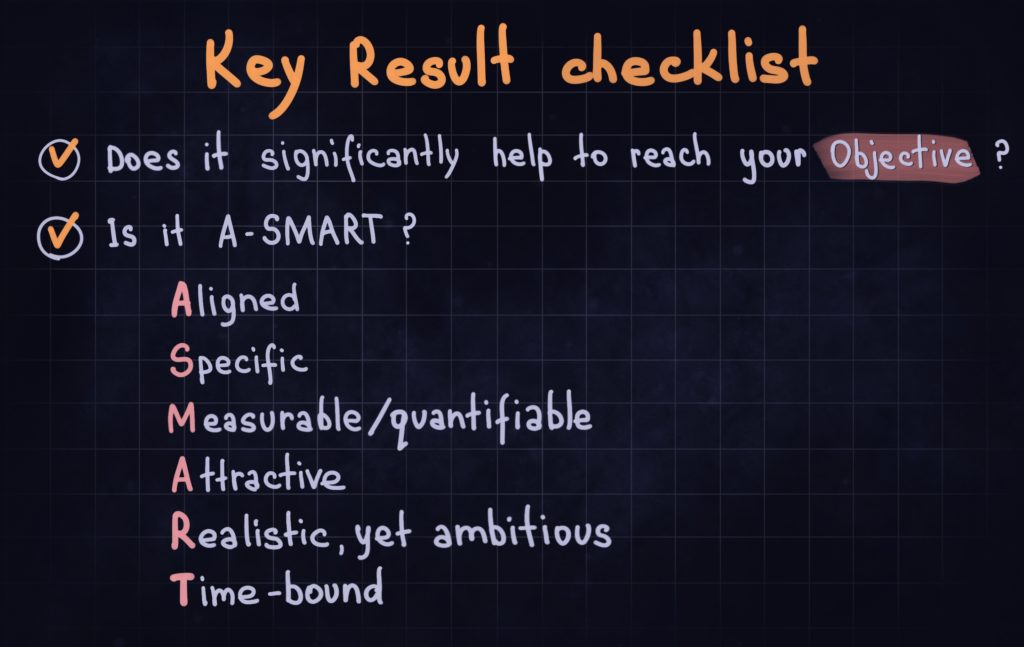
Understanding OKRs: What They Are & How to Develop Them
In today’s digital world, it’s virtually impossible to run a business without strictly defined goals. They determine the direction in which you want to develop and are a measurement of the state of your company.
Without a fixed objective, the overall vision and mission are blurred, and employees lack a sense of purpose in their daily tasks. There are some common OKR mistakes companies make, but we hope to help you avoid them.
In an environment where everything is fighting for our attention, the OKR method allows you to maintain the right priorities and stay focused on what’s important.
Many global business celebrities use this method, including Google, LinkedIn, and Spotify. Google has even compiled a Guide to OKRs.
It may sound quite obvious, but not every goal is achievable, and not all goals can be measured effectively. So how do you go about setting practical and realistic goals?
Finiata uses the OKR method and has thoroughly analyzed its processes and procedures.
What lessons did we learn from this?
This method is very intuitive – you need to set a few of the most important goals, and then select measurements for each that will objectively confirm the moment you approach them.
OKRs are perfect for quarterly planning, and also prove useful when designing future goals. The quarter is a very rewarding period for planning. It conveniently corresponds to the natural cycle of time, and is a long enough period that you can achieve a lot, but also short enough that you’ll be able to effectively estimate which goals you’ll be able to achieve.
Developing qualitative objectives
In case we got ahead of ourselves, OKR stands for Objective Key Results. Objectives refer to what goals you want to achieve, and in what period of time.
By definition, objectives are qualitative, ambitious, and inspirational and describe a desired state. The “objective” in OKR should be qualitative (not quantitative). It’s a catchphrase that describes the state or change that we intend to achieve.
It’s supposed to be an exciting, concrete challenge that your team easily understands. It serves precise communication of intentions, for example, “Conquer the Australian market.”

Selecting quantifiable key results to achieve your objective
Think of your objective as a compass, pointing towards where you want to go. The key results are the distance to reach that place. Once you’ve got a defined goal, you need to add a measure of success to it. These key results will be the definition of done for your objective.
The key results are 3 to 5 points that will determine to what extent your objective was achieved. They are measurable.
Each of them will have an independent quantitative definition of done so that you’ll be able to verify each at a specific point in time. This will allow you to determine how far along you are in achieving your objective.
Effective key results are specific and time-bound, ambitious yet realistic. Most of all, they are measurable and trackable.

As these are development goals that should encourage us to act boldly, it is almost impossible to fully achieve them. If you do achieve them in full, they are probably not ambitious enough. If you don’t even start, it means that they are impossible to achieve.
Each goal should be linked to 3-5 measurable outcomes to continuously monitor progress.
Using OKRs for your next quarter
The key to OKRs is identifying your current priorities – choosing what’s most important to focus on
It’s not easy. The greatest challenge can be giving up many existing goals (which often won’t be completed anyway). However, there is no other way to get away from the “everything is important” dilemma.
OKRs should be communicated in a single, concise, company-wide format that creates a coherent language of goals. OKRs should be easily understood by everyone in a company, and the monitoring of them allows everyone to stay updated on the progress and facilitate decision-making.
The progress of the OKR is checked on a weekly basis, and finally at the end of each quarter, providing data that will determine what is working and what to continue, as well as what didn’t work, and what could be done differently.
OKRs can create more collaborative work environments
The implementation of OKRs increases the effectiveness of your strategy performance, harmonizing team activities and eliminating anything that doesn’t support the strategy (and doesn’t bring benefits).
OKRs have to be available to all employees in a company. The impact one can have, and knowing that they are contributing to something meaningful as a team, promotes ownership of work and collaboration.
Takeaways
- OKRs are often used for quarterly planning.
- Objectives should be qualitative, defining the ultimate goal to be achieved.
- Key results are the measures of success. They must be quantitative.
- OKRs should be accessible to everyone in a company, in a clear and concise company-wide format.


